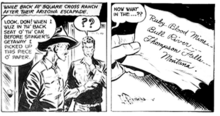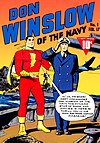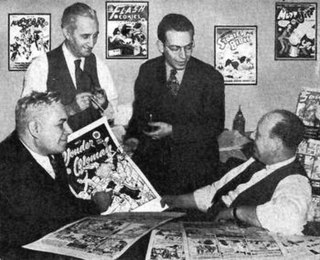
Maxwell Charles Gaines was an American publisher and a pioneering figure in the creation of the modern comic book.

An American comic book is a thin periodical originating in the United States, on average 32 pages, containing comics. While the form originated in 1933, American comic books first gained popularity after the 1938 publication of Action Comics, which included the debut of the superhero Superman. This was followed by a superhero boom that lasted until the end of World War II. After the war, while superheroes were marginalized, the comic book industry rapidly expanded and genres such as horror, crime, science fiction and romance became popular. The 1950s saw a gradual decline, due to a shift away from print media in the wake of television and the impact of the Comics Code Authority. The late 1950s and the 1960s saw a superhero revival and superheroes remained the dominant character archetype throughout the late 20th century into the 21st century.
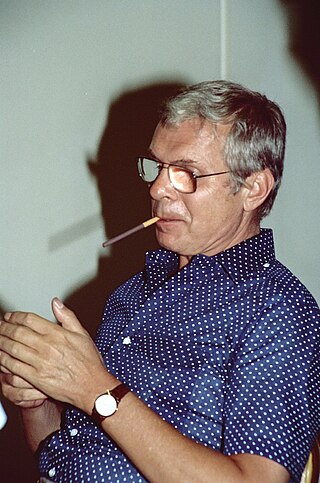
Leonard Starr was an American cartoonist, comic book artist, and advertising artist, best known for creating the newspaper comic strip On Stage and reviving Little Orphan Annie.

Scorchy Smith is an American adventure comic strip created by artist John Terry that ran from March 17, 1930 to December 30, 1961.

The Newspaper Enterprise Association (NEA) is an editorial column and comic strip newspaper syndication service based in the United States and established in 1902. The oldest syndicate still in operation, the NEA was originally a secondary news service to the Scripps Howard News Service; it later evolved into a general syndicate best known for syndicating the comic strips Alley Oop, Our Boarding House, Freckles and His Friends, The Born Loser, Frank and Ernest, and Captain Easy / Wash Tubbs; in addition to an annual Christmas comic strip. Along with United Feature Syndicate, the NEA was part of United Media from 1978 to 2011, and is now a division of Andrews McMeel Syndication. The NEA once selected college All-America teams, and presented awards in professional football and professional [NBA] basketball.

The Funnies is the name of two American publications from Dell Publishing, the first of these a seminal 1920s precursor of comic books, and the second a standard 1930s comic book.

Jungle Jim is the fictional hero of a series of jungle adventures in various media. The series began on January 7, 1934, as an American newspaper comic strip chronicling the adventures of Asia-based hunter Jim Bradley, who was nicknamed Jungle Jim. The character also trekked through radio, film, comic book and television adaptations. Notable was a series of films and television episodes in which Johnny Weissmuller portrayed the safari-suit wearing character, after hanging up his Tarzan loincloth. The strip concluded on August 8, 1954.

Mickey Finn was an American comic strip created by cartoonist Lank Leonard, which was syndicated to newspapers from April 6, 1936 to September 10, 1977. The successful lighthearted strip struck a balance between comedy and drama. It was adapted to a 400-page Little Big Book and was reprinted in several comic book series throughout the 1930s and 1940s.
The Eastern Color Printing Company was a company that published comic books, beginning in 1933. At first, it was only newspaper comic strip reprints, but later on, original material was published. Eastern Color Printing was incorporated in 1928, and soon became successful by printing color newspaper sections for several New England and New York papers. Eastern is most notable for its production of Funnies on Parade and Famous Funnies, two publications that gave birth to the American comic book industry.

Dan Dunn is a fictional detective created by Norman W. Marsh. He first appeared in Detective Dan: Secret Operative No. 48, a proto-comic book from 1933, produced by Humor Publishing. He subsequently appeared in newspaper comic strips from 1933 to 1943.
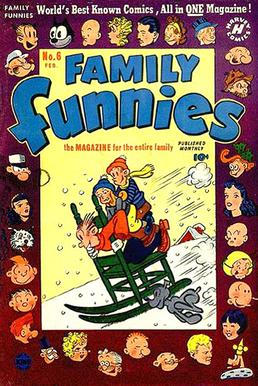
Toots and Casper is a family comic strip by Jimmy Murphy, distributed to newspapers for 38 years by King Features Syndicate, from December 17, 1918 to December 30, 1956. The strip spawned many merchandising tie-ins, including books, dolls, paper dolls, pins, bisque nodders and comic books.

The Bungle Family is an American gag-a-day comic strip, created by Harry J. Tuthill, that first appeared in 1918. Originally titled Home, Sweet Home, it first appeared as part of a series of rotating strips in the New York Evening Mail. The strip ran until June 2, 1945.

Funnies on Parade is an American giveaway publication of 1933 that was a precursor of comic books. The eight-page publication featured reprints of such popular syndicated comic strips as The Bungle Family, Joe Palooka, Keeping Up with the Joneses, Mutt and Jeff, Reg'lar Fellers, and Somebody's Stenog. Creators included F. O. Alexander, Gene Byrnes, Al Capp, Clare Victor Dwiggins, A. E. Hayward, C. M. Payne, Al Smith, and Harry J. Tuthill.
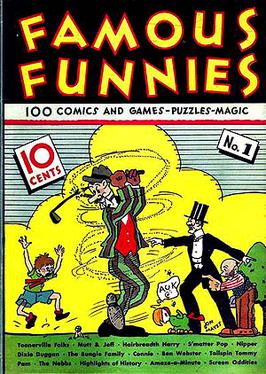
Famous Funnies is an American comic strip anthology series published from 1934 to 1955 with two precursor one-shots appearing in 1933–1934. Published by Eastern Color Printing, Famous Funnies is considered by popular culture historians as the first true American comic book, following seminal precursors.
Don Winslow of the Navy is a 1942 Universal Pictures Serial film based on the comic strip Don Winslow of the Navy by Commander Frank V. Martinek. It was theatrically released in January 1942.

The McNaught Syndicate was an American newspaper syndicate founded in 1922. It was established by Virgil Venice McNitt and Charles V. McAdam. Its best known contents were the columns by Will Rogers and O. O. McIntyre, the Dear Abby letters section and comic strips, including Joe Palooka and Heathcliff. It folded in September 1989.

Kenneth Fredrick Ernst was a US comic book and comic strip artist. He is most notable for his work on the popular and long-running comic strip Mary Worth from 1942 to 1985. With his realistic style, uncommon in those early years, Ernst paved the way for soap opera strips that followed.
The Bell Syndicate, launched in 1916 by editor-publisher John Neville Wheeler, was an American syndicate that distributed columns, fiction, feature articles and comic strips to newspapers for decades. It was located in New York City at 247 West 43rd Street and later at 229 West 43rd Street. It also reprinted comic strips in book form.
The Public Ledger Syndicate was a syndication company operated by the Philadelphia Public Ledger that was in business from 1915 to circa 1950. The Ledger Syndicate distributed comic strips, panels, and columns to the United States and the United Kingdom, Ireland, Canada, Sweden, New Zealand, and Australia. The syndicate also distributed material from the Curtis Publishing Company's other publications, including The Saturday Evening Post, Ladies' Home Journal, and The Country Gentleman.
Associated Newspapers, Inc. was a print syndication service of columns and comic strips that was in operation from 1912 to c. 1966. The syndicate was originally a cooperative of four newspapers: The New York Globe, the Chicago Daily News, The Boston Globe, and the Philadelphia Bulletin. Associated Newspapers was led by Henry Herbert McClure (1874-1938), a cousin of S. S. McClure, founder of the McClure Syndicate, the first American newspaper syndicate. In 1930, Associated Newspapers was acquired by and became a subsidiary of the Bell Syndicate. The syndicate's most successful, long-running strip was Gladys Parker's Mopsy.
